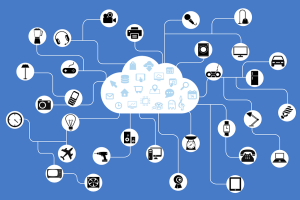IoT: Mitigating the business threats

There’s no denying that the Internet of Things (IoT) market has grown drastically over the past couple of years, and it is still continuing to gain momentum. IDC has predicted that IoT spending will reach US$745 billion (€664 billion) in 2019 – a 15% increase over last year’s $646 billion (€576 billion) – and will surpass the $1 trillion (€0.89 trillion) mark in 2022.
However, one of the things most often questioned is the safety of the IoT. With so many connected devices, how can organisations ensure that the IoT is secure? With this in mind, five IT experts spoke to IoT Now to give their advice and suggestions as to how companies can make sure that they stay safe when it comes to the IoT, and utilise it to their best advantage.
Focus on the tools you have
“Data dominates our personal lives, finances, and – with the adoption of big data – our businesses,” believes Brett Cheloff, VP of ConnectWise Automate. “From smartphones to watches, fitness apps, and smart homes, the Internet of Things (IoT) raises potential security risks.”
However, as Cheloff goes on to point out, “per a report from the Ponemon Institute, IBM, and Arxan, a staggering 80% of IoT applications and 71% of mobile applications are not tested for vulnerabilities, raising more concerns for data security.” This is where businesses can fail in regard to the IoT. One of the most important things a business can do is make sure the IoT devices are regularly checked for vulnerabilities.
Brett continues: “as the industry changes to meet the needs of a new tech generation, security will continue to evolve, and industry leaders will be closely monitoring the changes. With security built right into new solutions, managed service providers should be looking to their own tools to sync, support, and secure.”
One example of a tool companies can utilise to help keep the IoT secure is the cloud. Todd Kelly, chief security officer at Cradlepoint, advises that, “cybersecurity concerns are real when it comes to IoT but by using expert cloud-based management platforms and software-defined perimeter technologies, they can be effectively addressed.
“It’s important to remember there will always be IoT devices that are compromised and vulnerabilities that are exposed but just as we’ve built these technologies, we’ve also built the safety constructs to protect them. If we commit to tried and true security practices while adopting new approaches that leverage wireless, software-defined and cloud technologies we don’t have to let our concerns unduly impact our progress.”

Brett Cheloff
This is something that Eltjo Hofstee, managing director at Leaseweb UK Ltd agrees with. “Smartphones may have been the first ‘smart’ devices, but the Internet of Things aims to elevate almost every object we use to that status,” he comments.
“From smart watches to smart homes, by 2020, IoT is expected to become a $9 trillion (€8 trillion) industry. One of the most important contributing factors to the IoT’s continued success is the prevalence of the cloud, which is accessible, enables deployment and inter-device communication, supports data analytics, and helps minimise security risks. We encourage IT and business leaders to learn as much as possible about hybrid cloud and plan for a future with ubiquitous IoT.”
Utilising the IoT
However, it’s not just security of the IoT that businesses should be concerned with. “We are in the middle of an IoT explosion,” states Neil Barton, CTO at WhereScape. “With an expected 20 billion IoT devices by 2020, the resulting volume of data to be generated can be overwhelming to consider, and will be underutilised without the appropriate data infrastructure in place to leverage it.”
What Barton is suggesting is that it’s not just the IoT that companies need to ensure is safe, but the data that is produced too. He continues: “technologies, such as streaming data automation, can help companies to minimise any struggle around ingestion by helping IT teams to rapidly design, develop, deploy and operate the processing infrastructure needed. With real-time processing, companies can gain a competitive edge and insight into their business which will open opportunities for revenue growth, cost savings and operational improvements.”
Also, Richard Pugh, chief data scientist and co-founder at Mango Solutions, suggests that data science can also help when it comes to considering the value of the data produced. “Rather than simply using a tool to turn data into an actionable insight, data science is a way of blending technology, data and business awareness to extract value, not just information,” he comments.
“By adopting a data-driven culture across the entire organisation, businesses stand a far greater chance of success in the Information Age in terms of increasing efficiencies, optimising revenues, and providing richer experiences for clients, rather than just investing in plug-and-play solutions and hoping for the best.”
With the popularity of the IoT increasing, it’s important that businesses ensure that they are getting the most out of it, and using the above advice it can be utilised to its full potential, making sure all safety procedures are in place.
Comment on this article below or via Twitter @IoTGN
